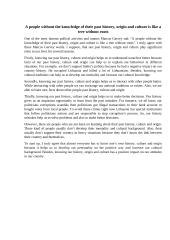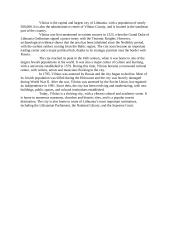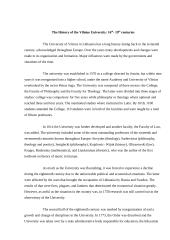Namų darbai
The history of the atomic bomb
"My God, what have we done?" - Robert Lewis, the co-pilot of the Enola Gay, the B-29 that dropped the first atomic bomb.
On August 2, 1939, just before the beginning of World War II, Albert Einstein wrote to then President Franklin D. Roosevelt. Einstein and several other scientists told Roosevelt to purify uranium-235, which could be used to build an atomic bomb. It was shortly thereafter that the United States Government began the serious undertaking known then only as "The Manhattan Project." Simply put, the Manhattan Project was committed to expediting research that would produce a viable atomic bomb.
The most complicated issue to be addressed in making of an atomic bomb was the production of ample amounts of "enriched" uranium to sustain a chain reaction. At the time, uranium-235 was very hard to extract. In fact, the ratio of conversion from uranium ore to uranium metal is 500:1. Compounding this, the one part of uranium that is finally refined from the ore is over 99% uranium-238, which is practically useless for an atomic bomb. To make the task even more difficult, the useful U-235 and nearly useless U-238 are isotopes, nearly identical in their chemical makeup. No ordinary chemical extraction method could separate them; only mechanical methods could work.
A massive enrichment laboratory was constructed at Oak Ridge, Tennessee. Harold C. Urey and his colleagues at Columbia University devised an extraction system that worked on the principle of gaseous diffusion, and Ernest O. Lawrence (inventor of the Cyclotron) at the University of California in Berkeley implemented a process involving magnetic separation of the two isotopes.
Next, a gas centrifuge was used to further separate the lighter U-235 from the heavier, non-fissionable U-238. Once all of these procedures had been completed, all that needed to be done was to put to the test...
Šį darbą sudaro 2104 žodžiai, tikrai rasi tai, ko ieškai!
★ Klientai rekomenduoja
Šį rašto darbą rekomenduoja mūsų klientai. Ką tai reiškia?
Mūsų svetainėje pateikiama dešimtys tūkstančių skirtingų rašto darbų, kuriuos įkėlė daugybė moksleivių ir studentų su skirtingais gabumais. Būtent šis rašto darbas yra patikrintas specialistų ir rekomenduojamas kitų klientų, kurie po atsisiuntimo įvertino šį mokslo darbą teigiamai. Todėl galite būti tikri, kad šis pasirinkimas geriausias!
Norint atsisiųsti šį darbą spausk ☞ Peržiūrėti darbą mygtuką!
- Anglų kalbos namų darbas
- 5 psl., (2104 ž.)
- Word failas 56 KB
- Lygis: Universitetinis
Mūsų mokslo darbų bazėje yra daugybė įvairių mokslo darbų, todėl tikrai atrasi sau tinkamą!
Panašūs darbai
Privalumai
Atsisiuntei rašto darbą ir neradai jame reikalingos informacijos? Pakeisime jį kitu nemokamai.
Pirkdamas daugiau nei vieną darbą, nuo sekančių darbų gausi 25% nuolaidą.
Išsirink norimus rašto darbus ir gauk juos akimirksniu po sėkmingo apmokėjimo!
Atsiliepimai












